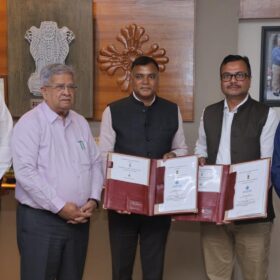pv magazine: How is the demand for solar modules in the market?
Loom Solar sells products through two platforms—online and offline. While our online business has not seen the spike usually seen in the summer season, the offline market has been hit more as the demand here is down by up to 50%.
In the switch from March to May, the demand usually gets doubled as people start running air-conditioning. We have not seen that spike in online market. In other words, the online demand is still at the pre-lockdown level.
The main reason is we have completely stopped advertising as [with lockdown restrictions in place] we are not able to ship and deliver the products within the tight timelines of the e-commerce platform.
While factories were shut for 40 days, many customers wanted to have the solar system post Lockdown. So the orders kept on piling up. The result is that we have run out of the stocks right now.
The government has allowed operations but with only 33% of staff. So the production is on the lower side.
There are no labourers either. At Loom Solar, we provide labourers with guest houses to stay as they earn only around Rs 10,000-15,000. However, by the time the government lifted some restrictions in the third phase of the lockdown, 75% of labour had already left for their places. So we have no labour available even for loading and unloading at the warehouse. We have to request sales and marketing staff to help us with the task.
In the offline model, customers approach nearby distributors, shop owners or system integrators to get the systems installed on their premises. Many areas are coming under the Red Zone. So, we have stopped taking orders from system integrators as we cannot deliver the system in the next 15 days. Solar systems being costly items, the customers want to place the order only when distributors have stock with them and don’t want to hold for more than 15 days.
Besides, there is reduced demand as the customer movement is restricted. System integrators cannot make installation visits either.
pv magazine: What’s the impact on supply chain and sourcing costs, especially for solar cells?
We usually import from Germany and Taiwan. The transit time to get the solar cell supplies has gone up, affecting the production.
Between March and May, Rupee has depreciated by 2-3% against the dollar. Second, international flight charges are now very high for logistics. So we have switched to the sea route to get the solar cell supplies. The result is if we earlier used to get the supplies in seven days through the air route, now it takes 45 days via sea route. So the cost of purchase has gone up by 5-6%, including currency depreciation, higher logistic cost, and blocking for capital for longer days.
pv magazine: Does that mean your sourcing preferences could change?
Most of the items (junction boxes, aluminium frames, wires, backsheets, etc) that we use in solar modules are India made, except solar cells.
Currently, India has 8 GW of solar module capacity, but the solar cell capacity is less than 1 GW. The ones who produce solar cells, are using the capacity for making their own modules to meet the domestic content requirement of their government projects.
pv magazine: Post Covid scenario, the government is aggressively pushing Make in India. What’s the mood in the industry?
India has 60-80 module manufacturers. In the current scenario, most of them plan to kickstart their solar cell manufacturing.
However, there are two challenges: First, setting up a solar cell manufacturing facility is very capital intensive. Second, it takes a long time—around two years—to make the facility to the operational stage.
The fear is that whether we will be able to compete on prices with imports from China and Taiwan after putting so much investment into setting up the facility.
So, the government needs to come up with a long-term strategy to protect the domestic manufacturers.
This content is protected by copyright and may not be reused. If you want to cooperate with us and would like to reuse some of our content, please contact: editors@pv-magazine.com.









4 comments
By submitting this form you agree to pv magazine using your data for the purposes of publishing your comment.
Your personal data will only be disclosed or otherwise transmitted to third parties for the purposes of spam filtering or if this is necessary for technical maintenance of the website. Any other transfer to third parties will not take place unless this is justified on the basis of applicable data protection regulations or if pv magazine is legally obliged to do so.
You may revoke this consent at any time with effect for the future, in which case your personal data will be deleted immediately. Otherwise, your data will be deleted if pv magazine has processed your request or the purpose of data storage is fulfilled.
Further information on data privacy can be found in our Data Protection Policy.